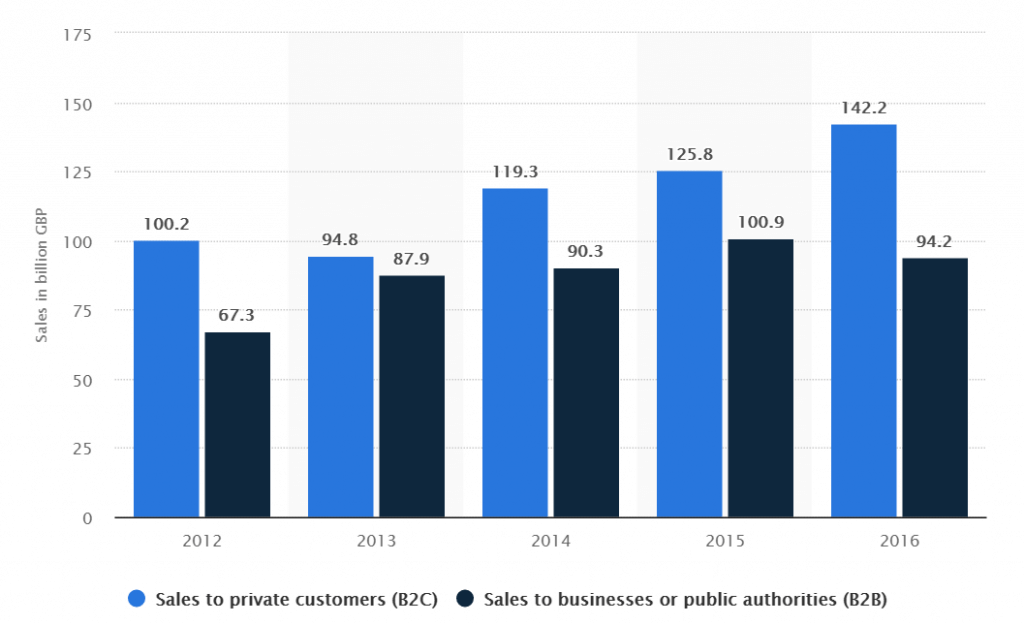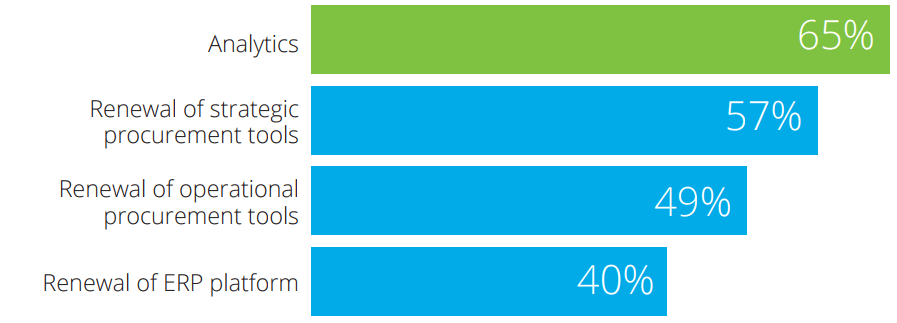The graph below from Statista demonstrates the shift towards online purchases in both the B2B and B2C space. Although online purchases are more prevalent for B2C transactions, there has still been an increase of 40% in the number of online B2B purchases made online from 2012 to 2016.

On Thursday, February 22nd SoftCo will be hosting a webinar titled: The Current State of Procurement: Five Key Priorities for Success in 2018. In this session, Garret Pearse (Senior Consultant, SoftCo) & Michael Cullen (VP Marketing, SoftCo) will be discussing the progression that procurement has made over the past decades and five factors that they believe will transform the procurement function in the future.
In this post, we have selected two of the five priorities that will transform the procurement landscape moving forward. Make sure that you don’t miss out on the other three by registering for the webinar.
Mobile Accessibility
“Smartphones will account for 33 percent of total IP traffic in 2021, up from 13 percent in 2016. – A large part of that tracks to businesses-related tasks.”
Mobile devices are commonly used both in business and personal lives. A small number of procurement organizations have begun to arm their teams with mobile accessibility. This enables teams to perform many of the same functions out of the office as they would be able to complete at their desk.
For procurement leaders and professionals, there are a number of benefits for leveraging mobile technologies:
Buyers can purchase from anywhere
One of the main advantages of mobile accessibility is having the ability to work from anywhere. Procurement professionals are often out of the office meeting suppliers or even away from their desk in a meeting. Being able to access a procurement system on the go means that procurement professionals can create requisitions and purchase instantly. This offers a competitive advantage to keep them ahead of the curve.
Access data on the go
Technology is collecting huge amounts of data on an ongoing basis and analyzing this data is critical for procurement teams to continue innovating. Having access to this data through mobile devices will enable procurement teams to make educated, data-driven decisions while on the go.
Eliminate blockages in the procurement process
One of the main reason for delays in the requisition approval process is the time it takes approvers to approve new requisitions. It is often the case where approvers will ignore or forget about new requisitions for weeks on end, causing serious backlogs. Mobile accessibility now allows approvers to receive a notification on their mobile device each time they need to approve a requisition. Approvers can easily approve, reject, or add comments from wherever they are. This ensures that requisitions can smoothly flow through the process.
Big Data and Analytics
“Almost half of all organizations now have roadmaps for their Big Data programs, and roughly 30% have implemented or are implementing Big Data and Analytics programs and solutions, either as a pilot or at scale.”
IBM Institute of Business Services
The Deloitte Global Chief Procurement Officer Survey 2017 found that 75% of CPOs believe that procurement’s role in delivering digital strategy will increase in the future. When asked, which area they thought would be most affected by technology, 65% of procurement leaders selected ‘Analytics.’

The reality is that every area of procurement is going to be, or already has been, affected by technology which means that large volumes of data will be collected. Even with all of the data collected and the complexity of the procurement process, procurement has been looking at the current trend in analytics from the outside looking in. In the majority of organizations, the commercial, customer-facing departments have reaped the benefits of analyzing big data and making educated decisions.
Forward-thinking procurement leaders are now taking advantage of learnings from other areas of organizations and introducing these ideas to their own function. Not only are these procurement executives building analytics that can record what has happened, they are moving one step forward to help them predict future developments that will impact their business. Accenture predicts that in the next five to seven years, analytics will be at the center of a more sophisticated decision-making and business intelligence engine in procurement that is connected to all levels of the supply chain
Conclusion
Procurement has traditionally been slow to react to emerging trends. With this said, there is a ‘buzz’ around the procurement function right now. Industry experts and analysts are predicting a huge shift in the procurement landscape in the coming years and we are already experiencing the start of it.



